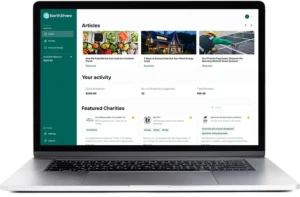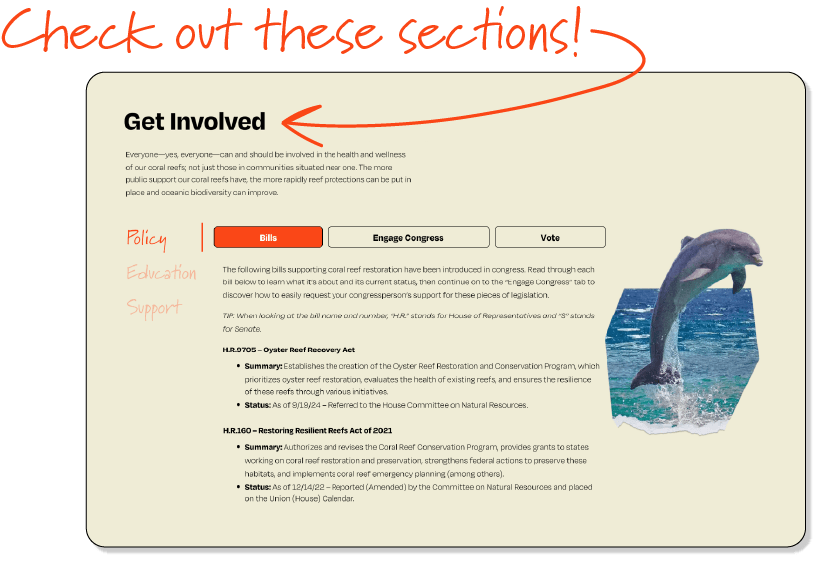SOLUTION
Resilient Communities
Building resilient, sustainable communities to help reach 30×30
Created in partnership with
Lloyd EcoDistrict
What is a resilient community?
A resilient community is constantly evolving and adapting to overcome social, environmental, and economic challenges. A sustainable community meets the needs of its citizens while maintaining an ecologically balanced environment that can support the community for the continued well-being of future generations. This includes minimizing waste, increasing efficiency for all utilities, transitioning to clean energy, and preventing pollution, among others.1“What is a Sustainable Community?” Institute for Sustainable Communities ≫
Though similar, these two terms are not interchangeable. Rather, a resilient community incorporates sustainability to overcome obstacles and continue to develop. Sustainability is a tool with which to achieve community resilience, and resilience should be our ultimate goal; especially in the face of today’s major climate challenges.
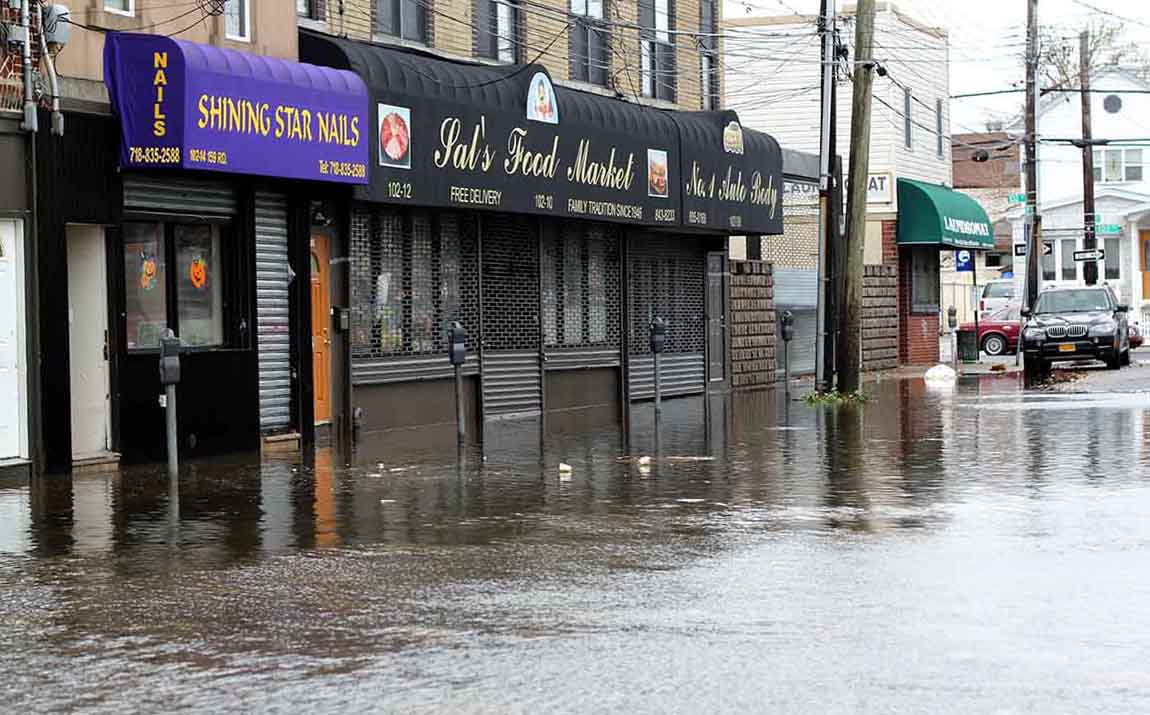
Heavy flooding damaged large swaths of the Northeast during Superstorm Sandy in 2012, grinding daily life—and local economies—to a halt. (IMAGE: Howard Beach, Queens, NYC, Pamela Andrade/Wikimedia)
Resilient Communities and Climate Change
The environmental disasters and hazards that come along with climate change are expensive and highly damaging to our communities, both physically and mentally. By putting sustainability first when we talk about community development and resilience building, we simultaneously reduce the environmental impact we’re having while also giving our communities the flexibility, adaptability, and protection to withstand the environmental, social, and economic shifts that are unavoidable as a result of a warming planet.2“Billion-Dollar Weather and Climate Disasters,” National Centers for Environmental Information/NOAA ≫; “Disaster and its impact on mental health,” Journal of Family Medicine and Primary Care ≫
“It’s undeniable that our local natural and built environments are impacted by climate change. Increased average temperatures, days with extreme high and low temperatures, excessive fluctuations in precipitation, and wildfire smoke are going to become more common in the decades ahead for our local communities.”
– Joshua Baker, Lloyd EcoDistrict
Resilient Communities and 30x30
Sure, rural and urban resilient communities are important, but how do they relate to 30×30 and conserving 30% of biodiverse and ecologically important lands and waters?
Humans, like all living things, play a role in ecosystems all over the world. And like all dynamic systems, our actions are interconnected with the health and wellness of all other organisms around us. Where we live, how we live, what supplies our energy, and how we handle our waste all influence our environmental impact. We cannot protect our important natural spaces and ecosystems if our actions elsewhere only continue to damage them.3“There’s a place for us: New research reveals humanity’s roles in ecosystems,” Santa Fe Institute ≫
If we want to build resilient, sustainable communities that reduce the harm done to our environment and further our own wellbeing, we must address:
Sustainable Communities: The Low Down
Learn about the who, where, and when of leveraging resilient communities for 30×30 goals.
- The Who
- The Where
- The When
Who has the decision-making power in your community? Who can prioritize sustainability and resilience with new projects and legislation? Who is driving positive change for both citizens and the environment? Depending on where you live, the answers to these questions may vary.
We’ve identified the following groups of changemakers who often have the most power and opportunity to initiate positive change.
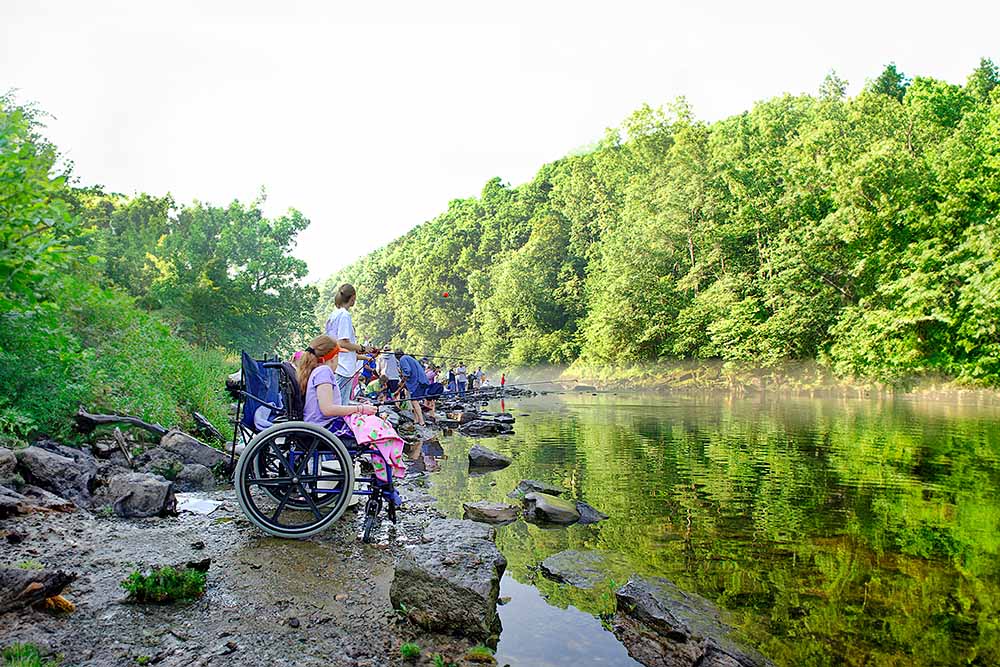
A community fishing event in Heber Springs, Arkansas, teaches participants about local ecosystems and efforts to conserve a range of aquatic species. (IMAGE: Larry Jernigan/U.S. Fish and Wildlife Service)
Every community around the world can benefit from improving their resiliency. But where will initial changes be most effective? Urban areas are an obvious start. After all, cities occupy only 3% of global land but produce 75% of all carbon emissions and 60–80% of energy consumption.4“Goal 11: Make cities inclusive, safe, resilient and sustainable,” United Nations Sustainable Development Goals ≫
To promote healthy, just, and sustainable neighborhoods—the heart of urban environments—we need to evolve local policies to update, retrofit, and renovate current community infrastructure and assets; especially in financially insecure areas where additional affordable housing is needed. To date, 6.7 million Americans live in substandard housing—despite the fact that there are 28 homes sitting empty for every one person experiencing houselessness in the U.S.5“Greater assistance needed to combat persistence substandard housing,” Joint Center for Housing Studies ≫; “Vacant Homes vs. Homelessness in Cities in the U.S.,” United Way ≫ Rather than producing more waste and emissions to create new housing, we can start by transforming what already exists within the infrastructure of our cities.
This is a solution that needs to start at home; particularly for industrialized, economically prosperous countries that are the main sources of greenhouse gas emissions worldwide. We must begin by addressing our local communities, focusing on equity, sustainability, and environmental justice, to positively impact the world and, specifically, the Global South, where the impacts of climate-related natural disasters are far more severe than anywhere else on the planet.6“Sustainable Cities and Communities,” World Bank ≫
To build resilience, sustainable city and community development efforts are already popping up around the world, having a significant impact on how global society views what’s possible. Neighborhoods identified as EcoDistricts and Just Communities are small enough to innovate and realize the hopes and desires of a local community, while also being big enough to leverage meaningful investment and public policy.
The results will likely evolve as the communities do; starting with local municipalities and branching out to county, state, and eventually nationwide transitions to a sustainability-focused framework that implements resilience-building solutions.
It’s important to be flexible and adjust approaches as needs and resources change. For the transition toward sustainability to be just and to truly achieve resilience, we must keep the well-being of all community members in mind, not just a select few. As social needs change, sustainability efforts must adjust to meet them.
The end goal? To create a new normal where resilience and sustainability are prioritized for all current and future communities, whether those are urban, rural, or somewhere in between.
Resilient Communities in Action
With the importance of sustainability on the rise, cities and nonprofit organizations throughout the U.S. have taken on the challenge of building resilient neighborhoods like these:7Just Communities, Partnership for Southern Equity ≫
Slavic Village, Cleveland | Covering five square miles on Cleveland’s southeast, this mixed-use neighborhood is the largest certified EcoDistrict in the world. Since 2009, various revitalization projects have brought about improved housing, open space, public transit, walking trails, neighborhood beautification through art, and a commitment to community-wide equity.
Millvale, Pennsylvania | After two massive floods and decades of industrial decline, Millvale, Pennsylvania rallied behind a sustainability-focus renewal. An EcoDistrict since 2012, the small town has addressed food, water, energy, air, mobility, and equity. Today, Millvale is a self-reliant solar village, grows local produce in community gardens, and connects to a just watershed.
Capitol Hill, Seattle | One of Pacific Northwest’s most densely-populated neighborhoods, Capitol Hill became an EcoDistrict in 2011 to prioritize community health and resiliency. Today, the area is a test lab for neighborhood problem solving, spreading ideas around the Seattle area—from community solar and shared parking to low-cost transit and small business waste reduction.
Get Involved
EVERYONE can help create resilient communities, and strong public support is one of the fastest ways to set change in motion, especially in the face of significant obstacles created by rapidly changing federal policy.
Explore below to learn more!
- Policy
- Education
- Support
- Bills
- Engage Congress
- Vote
The following bills supporting open spaces have been introduced in congress. Read through each bill below to learn what it’s about and its current status, then continue on to the “Engage Congress” tab to discover how to easily request your congressperson’s support for these pieces of legislation. (When looking at the bill name and number, “H.R.” stands for House of Representatives and “S” stands for Senate.)
H.R.891 – Energy Resilient Communities Act
- Summary: Directs the Secretary of Energy to conduct a grant program for improving energy democracy, resilience, and more.
- Status: As of 2/17/2023 – Referred to the Subcommittee on Energy, Climate and Grid Security.
S.4900 – Investing in Community Resilience Act of 2024
- Summary: Amends the Robert T. Stafford Disaster Relief and Emergency Assistance Act to invest in preparedness measures, including regular emergency training, for more resilient communities.
- Status: As of 9/25/24 – Referred to the Committee on Homeland Security and Governmental Affairs. The bill was redrafted and has committee support to be reported to the Senate.
S.2749 – Wildfire Resilient Communities Act | H.R.6525 – Wildfire Resilient Communities Act
- Summary: Provides mandatory funding for the removal or modification of flammable debris on Federal lands through the use of prescribed fire (burning).
- Status: As of 1/24/24 – Referred to the Subcommittee on Forestry (HR) and referred to the Committee on Agriculture, Nutrition, and Forestry (S).
H.R.3073 / S.1452 – Community Mental Wellness & Resilience Act
- Summary: Funds community-led initiatives that use a public health approach to prevent and treat mental health problems caused by toxic stresses, emergencies, and natural disasters.
- Status: As of 5/5/23 – Referred to the Subcommittee on Health (HR). Read twice and referred to the Committee on Health, Education, Labor, and Pensions (S).
Not sure who represents you in congress? Follow these quick steps to find your congressional representatives and how to contact them:
- Click here and input your home address, then click the search icon.
- Under the name of the representative you want to reach, look for the section titled “Contact.”
- To make a phone call, copy the phone number provided.
- To send an email (or other form of outreach), select the blue hyperlinked word “contact.”
- This will take you to a page with different methods for reaching your representative.
To make the process as simple as possible, we’ve provided you with email and phone call templates. Simply fill in the blanks with your information and then reach out to your representatives!
Your vote means something. It’s your chance to voice your support for the people and policies you think will make a positive difference in your community and across the country.
Register to Vote
Not yet registered to vote? Get started:
It’s super easy! All you have to do is:
- Select the state or territory you live in
- Start your online voter registration
When registering, make sure you have a valid form of identification. This could be your Driver’s License, State ID, and/or Social Security Number.
Find Your Voting Location
Are you a new voter? Have you moved recently? Or maybe you just want to double check you know where you’re going? Find your voting location:
Remind Others to Vote
- Text election reminders to friends and family
- Snap that “I Voted” selfie and share it with the world (this simple act has been shown to increase voter turnout by 4.1%)
- Help others create a voting plan
- Sign up for programs like When We All Vote to help educate others on the importance of voting, important deadlines, and more

- The Issue
- Advocate
- Keep Learning
How can we promote resilient communities if we don’t know what they are? More education is needed to: 1) inform the public about what it means to build a resilient community, and 2) get people on board with sustainability strategies in local areas.
What is “resilient” for one community might look vastly different for another, which is why community-centered and community-led approaches to resiliency are so important. Most often, the best experts for what a community needs to be more resilient (whether that’s food, infrastructure, energy—the list goes on) are the locals who live there. We must learn from them.
Greater shared knowledge about resilient communities can also lead to better, more informed legislation. Legislators and political representatives at all levels need a firm understanding of these basic concepts in order to make educated decisions.
Share This Page
Help educate your network of friends, family and followers when you share this page and post about it on social media!
Explore Further
Interested in learning even more about the importance of resilient communities? We’ve compiled a list of key resources to help you move forward on your learning path.
Experts
Meet the professionals fighting for resilient communities throughout the U.S.
Learning Hubs
Dive deeper into the topic with more educational tools.
- Resources | Naturally Resilient Communities
- Community Resilience Planning Resources | HUD
- Justice 40rward | WE ACT for Environmental Justice
- Resources Library | Scenic America
Other Resources
- Partnership for Resilient Communities | Institute for Sustainable Communities
- Cultural and Community Resilience (Grant) | National Endowment for the Humanities
- Equity in Practice: Strengthening Transit through Community Partnerships | Center for Neighborhood Technology
- Scenic Byways and All-American Roads | Scenic America

- Nonprofit Limitations
- Donate
- Volunteer
Ask any nonprofit in America (and around the world) what their greatest two challenges are, and they are very likely to say the same things: funding and capacity.
Nonprofits striving to implement and advance resilient communities throughout the U.S. and around the globe are no stranger to this. That’s why your support—be it financial or through volunteer work—makes an enormous difference. By supporting an organization with your time and/or money, you are helping to increase their impact, expand their reach, and make it easier for good to be done for our planet.
Donate to Nonprofits
Meet the vetted EarthShare Nonprofit Partners making a difference for resilient communities and donate to their cause!
- Lloyd EcoDistrict | Making Portland’s Lloyd neighborhood the most sustainable, just, and resilient community in the U.S.
- Bethesda Green | Building sustainable urban ecosystems via projects that enhance quality of life and green living
- Center for Neighborhood Technology | Delivering research, tools, and solutions for sustainable, resilient, and equitable neighborhoods
- Climate Solutions Accelerator | Creating healthier, equitable, and regenerative communities by mobilizing local citizens
- Delta Institute | Using nature-based climate solutions, resilient agriculture, and sustainability for a better Midwest
- Detroiters Working for Environmental Justice | Uniting Detroit community members on environmental and public health action that values all people
- Scenic America | Safeguarding America’s natural beauty, improving infrastructure, and supporting open spaces for all
- The Street Trust | advocating for multimodal transportation options that are safe, accessible, equitable, and climate just
- Urban Climate Resilient Infrastructure & Strategic Planning (UCRISP) | Leading community and data-driven climate mitigation/adaptation strategies in urban and rural areas
- WE ACT for Environmental Justice | Empowering and organizing low-income residents and people of color to build healthy communities for all

- Policy
- Education
- Support
- Bills
- Engage Congress
- Vote
The following bills supporting open spaces have been introduced in congress. Read through each bill below to learn what it’s about and its current status, then continue on to the “Engage Congress” tab to discover how to easily request your congressperson’s support for these pieces of legislation. (When looking at the bill name and number, “H.R.” stands for House of Representatives and “S” stands for Senate.)
H.R.891 – Energy Resilient Communities Act
- Summary: Directs the Secretary of Energy to conduct a grant program for improving energy democracy, resilience, and more.
- Status: As of 2/17/2023 – Referred to the Subcommittee on Energy, Climate and Grid Security.
S.4900 – Investing in Community Resilience Act of 2024
- Summary: Amends the Robert T. Stafford Disaster Relief and Emergency Assistance Act to invest in preparedness measures, including regular emergency training, for more resilient communities.
- Status: As of 9/25/24 – Referred to the Committee on Homeland Security and Governmental Affairs. The bill was redrafted and has committee support to be reported to the Senate.
S.2749 – Wildfire Resilient Communities Act | H.R.6525 – Wildfire Resilient Communities Act
- Summary: Provides mandatory funding for the removal or modification of flammable debris on Federal lands through the use of prescribed fire (burning).
- Status: As of 1/24/24 – Referred to the Subcommittee on Forestry (HR) and referred to the Committee on Agriculture, Nutrition, and Forestry (S).
H.R.3073 / S.1452 – Community Mental Wellness & Resilience Act
- Summary: Funds community-led initiatives that use a public health approach to prevent and treat mental health problems caused by toxic stresses, emergencies, and natural disasters.
- Status: As of 5/5/23 – Referred to the Subcommittee on Health (HR). Read twice and referred to the Committee on Health, Education, Labor, and Pensions (S).
Not sure who represents you in congress? Follow these quick steps to find your congressional representatives and how to contact them:
- Click here and input your home address, then click the search icon.
- Under the name of the representative you want to reach, look for the section titled “Contact.”
- To make a phone call, copy the phone number provided.
- To send an email (or other form of outreach), select the blue hyperlinked word “contact.”
- This will take you to a page with different methods for reaching your representative.
To make the process as simple as possible, we’ve provided you with email and phone call templates. Simply fill in the blanks with your information and then reach out to your representatives!
Your vote means something. It’s your chance to voice your support for the people and policies you think will make a positive difference in your community and across the country.
Register to Vote
Not yet registered to vote? Get started:
It’s super easy! All you have to do is:
- Select the state or territory you live in
- Start your online voter registration
When registering, make sure you have a valid form of identification. This could be your Driver’s License, State ID, and/or Social Security Number.
Find Your Voting Location
Are you a new voter? Have you moved recently? Or maybe you just want to double check you know where you’re going? Find your voting location:
Remind Others to Vote
- Text election reminders to friends and family
- Snap that “I Voted” selfie and share it with the world (this simple act has been shown to increase voter turnout by 4.1%)
- Help others create a voting plan
- Sign up for programs like When We All Vote to help educate others on the importance of voting, important deadlines, and more

- The Issue
- Advocate
- Keep Learning
How can we promote resilient communities if we don’t know what they are? More education is needed to: 1) inform the public about what it means to build a resilient community, and 2) get people on board with sustainability strategies in local areas.
What is “resilient” for one community might look vastly different for another, which is why community-centered and community-led approaches to resiliency are so important. Most often, the best experts for what a community needs to be more resilient (whether that’s food, infrastructure, energy—the list goes on) are the locals who live there. We must learn from them.
Greater shared knowledge about resilient communities can also lead to better, more informed legislation. Legislators and political representatives at all levels need a firm understanding of these basic concepts in order to make educated decisions.
Share This Page
Help educate your network of friends, family and followers when you share this page and post about it on social media!
Explore Further
Interested in learning even more about the importance of resilient communities? We’ve compiled a list of key resources to help you move forward on your learning path.
Experts
Meet the professionals fighting for resilient communities throughout the U.S.
Learning Hubs
Dive deeper into the topic with more educational tools.
- Resources | Naturally Resilient Communities
- Community Resilience Planning Resources | HUD
- Justice 40rward | WE ACT for Environmental Justice
- Resources Library | Scenic America
Other Resources
- Partnership for Resilient Communities | Institute for Sustainable Communities
- Cultural and Community Resilience (Grant) | National Endowment for the Humanities
- Equity in Practice: Strengthening Transit through Community Partnerships | Center for Neighborhood Technology
- Scenic Byways and All-American Roads | Scenic America

- Nonprofit Limitations
- Donate
- Volunteer
Ask any nonprofit in America (and around the world) what their greatest two challenges are, and they are very likely to say the same things: funding and capacity.
Nonprofits striving to implement and advance resilient communities throughout the U.S. and around the globe are no stranger to this. That’s why your support—be it financial or through volunteer work—makes an enormous difference. By supporting an organization with your time and/or money, you are helping to increase their impact, expand their reach, and make it easier for good to be done for our planet.
Donate to Nonprofits
Meet the vetted EarthShare Nonprofit Partners making a difference for resilient communities and donate to their cause!
- Lloyd EcoDistrict | Making Portland’s Lloyd neighborhood the most sustainable, just, and resilient community in the U.S.
- Bethesda Green | Building sustainable urban ecosystems via projects that enhance quality of life and green living
- Center for Neighborhood Technology | Delivering research, tools, and solutions for sustainable, resilient, and equitable neighborhoods
- Climate Solutions Accelerator | Creating healthier, equitable, and regenerative communities by mobilizing local citizens
- Delta Institute | Using nature-based climate solutions, resilient agriculture, and sustainability for a better Midwest
- Detroiters Working for Environmental Justice | Uniting Detroit community members on environmental and public health action that values all people
- Scenic America | Safeguarding America’s natural beauty, improving infrastructure, and supporting open spaces for all
- The Street Trust | advocating for multimodal transportation options that are safe, accessible, equitable, and climate just
- Urban Climate Resilient Infrastructure & Strategic Planning (UCRISP) | Leading community and data-driven climate mitigation/adaptation strategies in urban and rural areas
- WE ACT for Environmental Justice | Empowering and organizing low-income residents and people of color to build healthy communities for all

Where to Start
We’ve curated a list of nonprofits doing work in the United States and around the world to build resilient, sustainable communities. Learn more about the incredible work they’re doing and show your support.
Check out these orgs!
Lloyd EcoDistrict*Lloyd EcoDistrict is our 30×30 Partner for resilient communities and contributed their knowledge, experiences, and on-the-ground expertise to improve accuracy and storytelling. | Making Portland’s Lloyd neighborhood the most sustainable, just, and resilient community in the U.S.
Bethesda Green | Building sustainable urban ecosystems via projects that enhance quality of life and green living
Center for Neighborhood Technology | Delivering research, tools, and solutions for sustainable, resilient, and equitable neighborhoods
Climate Solutions Accelerator | Creating healthier, equitable, and regenerative communities by mobilizing local citizens
Delta Institute | Using nature-based climate solutions, resilient agriculture, and sustainability for a better Midwest
Detroiters Working for Environmental Justice | Uniting Detroit community members on environmental and public health action that values all people
Scenic America | Safeguarding America’s natural beauty, improving infrastructure, and supporting open spaces for all
The Street Trust | advocating for multimodal transportation options that are safe, accessible, equitable, and climate just
Urban Climate Resilient Infrastructure & Strategic Planning (UCRISP) | Leading community and data-driven climate mitigation/adaptation strategies in urban and rural areas
WE ACT for Environmental Justice | Empowering and organizing low-income residents and people of color to build healthy communities for all
* EARTHSHARE 30×30 PARTNER
Created as part of the Mosaic 2023 Movement Infrastructure grant program
Share your thoughts on The 30×30 Project website
©2025 EarthShare | Registered 501(c)(3) nonprofit
